96 papers:
 CSCW-2015-BiehlAD #communication #comprehension
CSCW-2015-BiehlAD #communication #comprehension- Not Really There: Understanding Embodied Communication Affordances in Team Perception and Participation (JTB, DA, AD), pp. 1567–1575.
 CSCW-2015-QuattroneCM #bias #dataset
CSCW-2015-QuattroneCM #bias #dataset- There’s No Such Thing as the Perfect Map: Quantifying Bias in Spatial Crowd-sourcing Datasets (GQ, LC, PDM), pp. 1021–1032.
 DUXU-DD-2015-Mesbahi #exclamation #interactive
DUXU-DD-2015-Mesbahi #exclamation #interactive- Human-Robot Interaction Ethics in Sci-Fi Movies: Ethics Are Not “There”, We Are the Ethics! (MEM), pp. 590–598.
 ICMT-J-2012-KuselSWKRS15 #model transformation #question #reuse
ICMT-J-2012-KuselSWKRS15 #model transformation #question #reuse- Reuse in model-to-model transformation languages: are we there yet? (AK, JS, MW, GK, WR, WS), pp. 537–572.
 DLT-2014-Weil #algebra #logic
DLT-2014-Weil #algebra #logic- From Algebra to Logic: There and Back Again The Story of a Hierarchy — (Invited Paper) (PW), pp. 275–278.
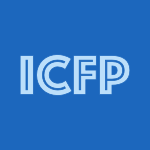 ICFP-2014-MarlowBCP #abstraction #concurrent #data access #performance
ICFP-2014-MarlowBCP #abstraction #concurrent #data access #performance- There is no fork: an abstraction for efficient, concurrent, and concise data access (SM, LB, JC, JP), pp. 325–337.
 CHI-2014-FeinbergCB #database #design #interactive #using
CHI-2014-FeinbergCB #database #design #interactive #using- Always somewhere, never there: using critical design to understand database interactions (MF, DC, JB), pp. 1941–1950.
 CHI-2014-RzeszotarskiSMMM #twitter
CHI-2014-RzeszotarskiSMMM #twitter- Is anyone out there?: unpacking Q&A hashtags on twitter (JMR, ESS, JNM, AMH, MRM), pp. 2755–2758.
 HCI-TMT-2014-BuchdidB #case study #human-computer #word
HCI-TMT-2014-BuchdidB #case study #human-computer #word- Is There HCI in IDTV? — An Exploratory Study on Their Words (SBB, MCCB), pp. 47–57.
 FSE-2014-SeoK #how #testing
FSE-2014-SeoK #how #testing- How we get there: a context-guided search strategy in concolic testing (HS, SK), pp. 413–424.
 CSMR-2013-MihanceaM #correlation #fault #morphism #polymorphism #question
CSMR-2013-MihanceaM #correlation #fault #morphism #polymorphism #question- Changes, Defects and Polymorphism: Is There Any Correlation? (PFM, CM), pp. 341–344.
 CHI-2013-CafaroPLRR #exclamation #interactive
CHI-2013-CafaroPLRR #exclamation #interactive- I see you there!: developing identity-preserving embodied interaction for museum exhibits (FC, AP, LL, JR, JR), pp. 1911–1920.
 CHI-2013-LewisUM #named
CHI-2013-LewisUM #named- UMUX-LITE: when there’s no time for the SUS (JRL, BU, DEM), pp. 2099–2102.
 CHI-2013-SodhiJFBM #3d #collaboration #mobile #named
CHI-2013-SodhiJFBM #3d #collaboration #mobile #named- BeThere: 3D mobile collaboration with spatial input (RS, BRJ, DAF, BPB, GM), pp. 179–188.
 SIGIR-2013-WestWH #predict #process #query
SIGIR-2013-WestWH #predict #process #query- Here and there: goals, activities, and predictions about location from geotagged queries (RW, RWW, EH), pp. 817–820.
 REFSQ-2013-Herrmann #requirements
REFSQ-2013-Herrmann #requirements- Requirements Engineering in Practice: There Is No Requirements Engineer Position (AH), pp. 347–361.
 PLOS-2013-Kell #operating system #question
PLOS-2013-Kell #operating system #question- The operating system: should there be one? (SK), p. 7.
 SOSP-2013-MoraruAK
SOSP-2013-MoraruAK- There is more consensus in Egalitarian parliaments (IM, DGA, MK), pp. 358–372.
 SAT-2013-Stuckey #problem
SAT-2013-Stuckey #problem- There Are No CNF Problems (PJS), pp. 19–21.
 PLDI-2012-BaconCS #configuration management #garbage collection #hardware #realtime
PLDI-2012-BaconCS #configuration management #garbage collection #hardware #realtime- And then there were none: a stall-free real-time garbage collector for reconfigurable hardware (DFB, PC, SS), pp. 23–34.
 CSCW-2012-PoelmanALJ
CSCW-2012-PoelmanALJ- As if being there: mediated reality for crime scene investigation (RP, OA, SL, PJ), pp. 1267–1276.
 ICSE-2012-BudgenDBH #education #question #what
ICSE-2012-BudgenDBH #education #question #what- What scope is there for adopting evidence-informed teaching in SE? (DB, SD, PB, NH), pp. 1205–1214.
 DLT-2011-KortelainenS #bound #context-free grammar
DLT-2011-KortelainenS #bound #context-free grammar- There Does Not Exist a Minimal Full Trio with Respect to Bounded Context-Free Languages (JK, TS), pp. 312–323.
 CHI-2011-RaffleRMBBHKCFGS #chat #exclamation #product line #video
CHI-2011-RaffleRMBBHKCFGS #chat #exclamation #product line #video- Hello, is grandma there? let’s read! StoryVisit: family video chat and connected e-books (HR, GR, KM, RB, KB, HH, JK, KC, NF, JG, MS), pp. 1195–1204.
 CHI-2011-Taylor
CHI-2011-Taylor- Out there (AST), pp. 685–694.
 DUXU-v1-2011-AuingerAKH #design #difference #question #web
DUXU-v1-2011-AuingerAKH #design #difference #question #web- Conformity with User Expectations on the Web: Are There Cultural Differences for Design Principles? (AA, AMA, HK, AH), pp. 3–12.
 SIGIR-2011-ChatzichristofisZA11a
SIGIR-2011-ChatzichristofisZA11a- The TREC files: the (ground) truth is out there (SAC, KZ, AA), pp. 1289–1290.
 RE-2011-Waldmann #agile #constraints #development #requirements #what
RE-2011-Waldmann #agile #constraints #development #requirements #what- There’s never enough time: Doing requirements under resource constraints, and what requirements engineering can learn from agile development (BW), pp. 301–305.
 DATE-2010-MoyerKCRHT #assembly #question
DATE-2010-MoyerKCRHT #assembly #question- Are we there yet? Has IP block assembly become as easy as LEGO? (BM, JK, JC, CR, EH, YT), p. 123.
 CSEET-2010-Thompson #effectiveness #industrial #re-engineering #why
CSEET-2010-Thompson #effectiveness #industrial #re-engineering #why- Why Better Industrial/Academic Links Are Needed If There is to Be an Effective Software Engineering Workforce (JBT), pp. 105–112.
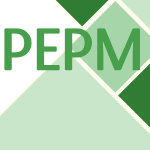 PEPM-2010-Haftmann #haskell #higher-order #logic
PEPM-2010-Haftmann #haskell #higher-order #logic- From higher-order logic to Haskell: there and back again (FH), pp. 155–158.
 CHI-2010-SmythKMT #mobile
CHI-2010-SmythKMT #mobile- Where there’s a will there’s a way: mobile media sharing in urban india (TNS, SK, IM, KT), pp. 753–762.
 CGO-2010-Newburn
CGO-2010-Newburn- There are at least two sides to every heterogeneous system (CCJN), p. 120.
 CAV-2010-RepsLTBL #verification
CAV-2010-RepsLTBL #verification- There’s Plenty of Room at the Bottom: Analyzing and Verifying Machine Code (TWR, JL, AVT, GB, AL), pp. 41–56.
 ICDAR-2009-KermorvantBMM #recognition
ICDAR-2009-KermorvantBMM #recognition- From Isolated Handwritten Characters to Fields Recognition: There’s Many a Slip Twixt Cup and Lip (CK, ALB, PM, FM), pp. 1031–1035.
 CSMR-2009-KpodjedoRGA #algorithm #evolution #question #using
CSMR-2009-KpodjedoRGA #algorithm #evolution #question #using- Recovering the Evolution Stable Part Using an ECGM Algorithm: Is There a Tunnel in Mozilla? (SK, FR, PG, GA), pp. 179–188.
 PEPM-2009-Gluck #question
PEPM-2009-Gluck #question- Is there a fourth Futamura projection? (RG), pp. 51–60.
 CHI-2009-Cockton #design #interactive
CHI-2009-Cockton #design #interactive- Getting there: six meta-principles and interaction design (GC), pp. 2223–2232.
 HCI-NT-2009-HaywoodB #quote
HCI-NT-2009-HaywoodB #quote- “I Love My iPhone ... But There Are Certain Things That ‘Niggle’ Me” (AH, GB), pp. 421–430.
 ECIR-2009-SandersonTAC #what
ECIR-2009-SandersonTAC #what- What Else Is There? Search Diversity Examined (MS, JT, TA, PDC), pp. 562–569.
 ECIR-2009-UdupaSBB #information retrieval #mining #query #quote
ECIR-2009-UdupaSBB #information retrieval #mining #query #quote- “They Are Out There, If You Know Where to Look”: Mining Transliterations of OOV Query Terms for Cross-Language Information Retrieval (RU, KS, AB, AB), pp. 437–448.
 PPoPP-2009-KulkarniBIPC #how #parallel #question
PPoPP-2009-KulkarniBIPC #how #parallel #question- How much parallelism is there in irregular applications? (MK, MB, RI, KP, CC), pp. 3–14.
 CSL-2009-HorbachW #induction #query
CSL-2009-HorbachW #induction #query- Deciding the Inductive Validity of FOR ALL THERE EXISTS * Queries (MH, CW), pp. 332–347.
 SIGMOD-2008-HarizopoulosAMS #what
SIGMOD-2008-HarizopoulosAMS #what- OLTP through the looking glass, and what we found there (SH, DJA, SM, MS), pp. 981–992.
 ICEIS-ISAS2-2008-Tagg #question
ICEIS-ISAS2-2008-Tagg #question- Is there a Role for Philosophy in Group Work Support? (RT), pp. 89–96.
 ICEIS-SAIC-2008-PetersDW #e-commerce #trust
ICEIS-SAIC-2008-PetersDW #e-commerce #trust- Consumer-to-Consumer Trust in E-Commerce — Are there Rules for Writing Helpful Product Reviews (GP, MD, RW), pp. 61–66.
 ECIR-2008-CarteretteBCD
ECIR-2008-CarteretteBCD- Here or There (BC, PNB, DMC, STD), pp. 16–27.
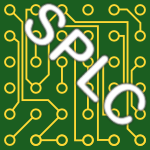 SPLC-2008-CzarneckiSW #feature model #modelling
SPLC-2008-CzarneckiSW #feature model #modelling- Sample Spaces and Feature Models: There and Back Again (KC, SS, AW), pp. 22–31.
 ICLP-2008-Fink #logic #programming
ICLP-2008-Fink #logic #programming- Equivalences in Answer-Set Programming by Countermodels in the Logic of Here-and-There (MF), pp. 99–113.
 DAC-2007-Hiller
DAC-2007-Hiller- There Is More Than Moore In Automotive ... (HH), p. 376.
 DAC-2007-Levitan #graph #random
DAC-2007-Levitan #graph #random- You Can Get There From Here: Connectivity of Random Graphs on Grids (SPL), pp. 272–273.
 DATE-2007-PozziP #future of #question
DATE-2007-PozziP #future of #question- A future of customizable processors: are we there yet? (LP, PGP), pp. 1224–1225.
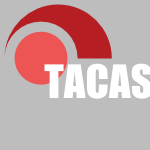 TACAS-2007-Cleaveland #lessons learnt
TACAS-2007-Cleaveland #lessons learnt- THERE AND BACK AGAIN: Lessons Learned on the Way to the Market (RC), p. 1.
 OCSC-2007-ChoY #how #programming
OCSC-2007-ChoY #how #programming- How to See the Beauty That Is Not There : The Aesthetic Element of Programming in the Computer- Based Media Art (HC, JY), pp. 292–300.
 SPLC-2007-CzarneckiW #diagrams #feature model #logic
SPLC-2007-CzarneckiW #diagrams #feature model #logic- Feature Diagrams and Logics: There and Back Again (KC, AW), pp. 23–34.
 CSL-2007-FinkelL #rank
CSL-2007-FinkelL #rank- There Exist Some ω-Powers of Any Borel Rank (OF, DL), pp. 115–129.
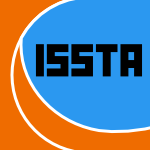 ISSTA-2007-ChangPY #approach #what
ISSTA-2007-ChangPY #approach #what- Finding what’s not there: a new approach to revealing neglected conditions in software (RYC, AP, JY), pp. 163–173.
 ITiCSE-2006-SudolB #education #student #women
ITiCSE-2006-SudolB #education #student #women- Is there such a thing as too much support?: a discussion from a teacher and a student’s perspective of support groups for girls in computer science (LAS, KB), p. 309.
 ITiCSE-2006-VilnerZ #difference #gender
ITiCSE-2006-VilnerZ #difference #gender- Once she makes it, she is there: gender differences in computer science study (TV, EZ), pp. 227–231.
 CHI-2006-BosONSHJ #distributed #question
CHI-2006-BosONSHJ #distributed #question- Collocation bindness in partially distributed groups: is there a downside to being collocated? (NB, JSO, NN, NSS, SH, EWJ), pp. 1313–1321.
 KDD-2006-Piatetsky-ShapiroGDFGZ #challenge #data mining #mining #question
KDD-2006-Piatetsky-ShapiroGDFGZ #challenge #data mining #mining #question- Is there a grand challenge or X-prize for data mining? (GPS, RG, CD, RF, LG, MJZ), pp. 954–956.
 DAC-2005-NowakR #question
DAC-2005-NowakR #question- Are there economic benefits in DFM? (MN, RR), pp. 767–768.
 DATE-2005-RosenstielBGGKLMMMS #question #tool support
DATE-2005-RosenstielBGGKLMMMS #question #tool support- Is there a Market for SystemC Tools? (WR, RAB, FG, TG, MK, MCvL, AM, MM, MM, SS), p. 950.
 CHI-2005-BeckwithBWCSH #debugging #effectiveness #gender #question
CHI-2005-BeckwithBWCSH #debugging #effectiveness #gender #question- Effectiveness of end-user debugging software features: are there gender issues? (LB, MMB, SW, CRC, SS, MH), pp. 869–878.
 CSCW-2004-BrownB #collaboration #game studies
CSCW-2004-BrownB #collaboration #game studies- CSCW at play: “there” as a collaborative virtual environment (BB, MB), pp. 350–359.
 ICALP-2003-GarganoH #graph #how
ICALP-2003-GarganoH #graph #how- There Are Spanning Spiders in Dense Graphs (and We Know How to Find Them) (LG, MH), pp. 802–816.
 ICSE-2003-Cohoon #women
ICSE-2003-Cohoon #women- Must There Be So Few? Including Women in CS (JMC), pp. 668–675.
 ICLP-2003-Smaus #equation #first-order #question #semantics
ICLP-2003-Smaus #equation #first-order #question #semantics- Is There an Optimal Generic Semantics for First-Order Equations? (JGS), pp. 438–450.
 ICFP-2002-DanvyG
ICFP-2002-DanvyG- There and back again (OD, MG), pp. 230–234.
 CBSE-2001-Lau #certification #component #predict
CBSE-2001-Lau #certification #component #predict- Component Certification and System Prediction: Is There a Role for Formality (KKL), p. 16.
 TACAS-2001-FislerFVY #algorithm #detection #question
TACAS-2001-FislerFVY #algorithm #detection #question- Is There a Best Symbolic Cycle-Detection Algorithm? (KF, RF, GK, MYV, ZY), pp. 420–434.
 CHI-2001-VertegaalSVN
CHI-2001-VertegaalSVN- Eye gaze patterns in conversations: there is more the conversational agents than meets the eyes (RV, RS, GCvdV, AN), pp. 301–308.
 KDD-2001-Edelstein #data mining #mining #question
KDD-2001-Edelstein #data mining #mining #question- Data mining: are we there yet? (HE), p. 7.
 RE-2001-Greenspan #question #requirements #what
RE-2001-Greenspan #question #requirements #what- Extreme RE: What If There Is No Time for Requirements Engineering? (SJG), pp. 282–285.
 ICSE-2001-ShepardK #how
ICSE-2001-ShepardK #how- How to Do Inspections When There is No Time (TS, DK), pp. 718–719.
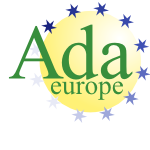 AdaEurope-2000-Pflug #ada #question
AdaEurope-2000-Pflug #ada #question- Ada after 10 Years of Usage — Is There a Commercial Future? (BP), p. 4.
 CIKM-2000-AmitayP #automation #question #web
CIKM-2000-AmitayP #automation #question #web- Automatically Summarising Web Sites — Is There A Way Around It? (EA, CP), pp. 173–179.
 ICRE-2000-Leite #question #research
ICRE-2000-Leite #question #research- Is there a Gap between RE Research and RE Practice? (JCSdPL), pp. 73–74.
 STOC-1997-Mulmuley #algebra #exclamation #proving
STOC-1997-Mulmuley #algebra #exclamation #proving- Is There an Algebraic Proof for P != NC? (Extended Abstract) (KM), pp. 210–219.
 CHI-1997-Golovchinsky #difference #query #question
CHI-1997-Golovchinsky #difference #query #question- Queries? Links? Is there a Difference? (GG), pp. 407–414.
 HCI-CC-1997-Blanchard #how #human-computer #interactive #question #standard #what
HCI-CC-1997-Blanchard #how #human-computer #interactive #question #standard #what- International Standards on Human-Computer Interaction: What is Out There and How Will it be Implemented? (HEB), pp. 599–602.
 CHI-1996-VelichkovskyH #human-computer #interactive
CHI-1996-VelichkovskyH #human-computer #interactive- New Technological Windows into Mind: There is More in Eyes and Brains for Human-Computer Interaction (BV, JPH), pp. 496–503.
 ICPR-1996-KaruJB #image #question
ICPR-1996-KaruJB #image #question- Is there any texture in the image? (KK, AKJ, RMB), pp. 770–774.
 KR-1996-AmatiP #logic #question #reasoning
KR-1996-AmatiP #logic #question #reasoning- Is There a Logic of Provability for Nonmonotonic Reasoning? (GA, FP), pp. 493–503.
 ICML-1995-RaoGS #question
ICML-1995-RaoGS #question- For Every Generalization Action, Is There Really an Equal and Opposite Reaction? (RBR, DFG, WMS), pp. 471–479.
 INTERCHI-1993-ODayJ #how
INTERCHI-1993-ODayJ #how- Orienteering in an information landscape: how information seekers get from here to there (VLO, RJ), pp. 438–445.
 CHI-1992-HollanS
CHI-1992-HollanS- Beyond Being There (JDH, SS), pp. 119–125.
 LICS-1992-Seth #axiom #recursion
LICS-1992-Seth #axiom #recursion- There is No Recursive Axiomatization for Feasible Functionals of Type~2 (AS), pp. 286–295.
 PEPM-1991-Wadler #linear #logic #question
PEPM-1991-Wadler #linear #logic #question- Is There a Use for Linear Logic? (PW), pp. 255–273.
 TAV-1991-Young #formal method #question #re-engineering
TAV-1991-Young #formal method #question #re-engineering- Formal Methods versus Software Engineering: Is There a Conflict? (WDY), pp. 188–189.
 NACLP-1990-Sagiv #question
NACLP-1990-Sagiv #question- Is There Anything Better than Magic? (YS), pp. 235–254.
 HT-1989-Lesk #what
HT-1989-Lesk #what- What To Do When There’s Too Much Information (ML), pp. 305–318.
 DAC-1984-Smith #layout #tool support #what
DAC-1984-Smith #layout #tool support #what- Basic turorial layout tools — what really is there (RS), p. 219.
 SIGMOD-1983-Stonebraker #question
SIGMOD-1983-Stonebraker #question- DBMS and AI: Is There any Common Point of View? (MS), p. 134.
 SIGMOD-1983-WilmsLS #distributed #execution #protocol #quote
SIGMOD-1983-WilmsLS #distributed #execution #protocol #quote- “I wish I were over there”: Distributed Execution Protocols for Data Definition in R* (PFW, BGL, PGS), pp. 238–242.
 DAC-1967-Weindlin #automation #design #programming language #question
DAC-1967-Weindlin #automation #design #programming language #question- Is there a “Best” Programming Language For Design Automation? (MW).
 CSCW-2015-BiehlAD #communication #comprehension
CSCW-2015-BiehlAD #communication #comprehension CSCW-2015-QuattroneCM #bias #dataset
CSCW-2015-QuattroneCM #bias #dataset DUXU-DD-2015-Mesbahi #exclamation #interactive
DUXU-DD-2015-Mesbahi #exclamation #interactive ICMT-J-2012-KuselSWKRS15 #model transformation #question #reuse
ICMT-J-2012-KuselSWKRS15 #model transformation #question #reuse DLT-2014-Weil #algebra #logic
DLT-2014-Weil #algebra #logic ICFP-2014-MarlowBCP #abstraction #concurrent #data access #performance
ICFP-2014-MarlowBCP #abstraction #concurrent #data access #performance CHI-2014-FeinbergCB #database #design #interactive #using
CHI-2014-FeinbergCB #database #design #interactive #using CHI-2014-RzeszotarskiSMMM #twitter
CHI-2014-RzeszotarskiSMMM #twitter HCI-TMT-2014-BuchdidB #case study #human-computer #word
HCI-TMT-2014-BuchdidB #case study #human-computer #word FSE-2014-SeoK #how #testing
FSE-2014-SeoK #how #testing CSMR-2013-MihanceaM #correlation #fault #morphism #polymorphism #question
CSMR-2013-MihanceaM #correlation #fault #morphism #polymorphism #question CHI-2013-CafaroPLRR #exclamation #interactive
CHI-2013-CafaroPLRR #exclamation #interactive CHI-2013-LewisUM #named
CHI-2013-LewisUM #named CHI-2013-SodhiJFBM #3d #collaboration #mobile #named
CHI-2013-SodhiJFBM #3d #collaboration #mobile #named SIGIR-2013-WestWH #predict #process #query
SIGIR-2013-WestWH #predict #process #query REFSQ-2013-Herrmann #requirements
REFSQ-2013-Herrmann #requirements PLOS-2013-Kell #operating system #question
PLOS-2013-Kell #operating system #question SOSP-2013-MoraruAK
SOSP-2013-MoraruAK SAT-2013-Stuckey #problem
SAT-2013-Stuckey #problem PLDI-2012-BaconCS #configuration management #garbage collection #hardware #realtime
PLDI-2012-BaconCS #configuration management #garbage collection #hardware #realtime CSCW-2012-PoelmanALJ
CSCW-2012-PoelmanALJ ICSE-2012-BudgenDBH #education #question #what
ICSE-2012-BudgenDBH #education #question #what DLT-2011-KortelainenS #bound #context-free grammar
DLT-2011-KortelainenS #bound #context-free grammar CHI-2011-RaffleRMBBHKCFGS #chat #exclamation #product line #video
CHI-2011-RaffleRMBBHKCFGS #chat #exclamation #product line #video CHI-2011-Taylor
CHI-2011-Taylor DUXU-v1-2011-AuingerAKH #design #difference #question #web
DUXU-v1-2011-AuingerAKH #design #difference #question #web SIGIR-2011-ChatzichristofisZA11a
SIGIR-2011-ChatzichristofisZA11a RE-2011-Waldmann #agile #constraints #development #requirements #what
RE-2011-Waldmann #agile #constraints #development #requirements #what DATE-2010-MoyerKCRHT #assembly #question
DATE-2010-MoyerKCRHT #assembly #question CSEET-2010-Thompson #effectiveness #industrial #re-engineering #why
CSEET-2010-Thompson #effectiveness #industrial #re-engineering #why PEPM-2010-Haftmann #haskell #higher-order #logic
PEPM-2010-Haftmann #haskell #higher-order #logic CHI-2010-SmythKMT #mobile
CHI-2010-SmythKMT #mobile CGO-2010-Newburn
CGO-2010-Newburn CAV-2010-RepsLTBL #verification
CAV-2010-RepsLTBL #verification ICDAR-2009-KermorvantBMM #recognition
ICDAR-2009-KermorvantBMM #recognition CSMR-2009-KpodjedoRGA #algorithm #evolution #question #using
CSMR-2009-KpodjedoRGA #algorithm #evolution #question #using PEPM-2009-Gluck #question
PEPM-2009-Gluck #question CHI-2009-Cockton #design #interactive
CHI-2009-Cockton #design #interactive HCI-NT-2009-HaywoodB #quote
HCI-NT-2009-HaywoodB #quote ECIR-2009-SandersonTAC #what
ECIR-2009-SandersonTAC #what ECIR-2009-UdupaSBB #information retrieval #mining #query #quote
ECIR-2009-UdupaSBB #information retrieval #mining #query #quote PPoPP-2009-KulkarniBIPC #how #parallel #question
PPoPP-2009-KulkarniBIPC #how #parallel #question CSL-2009-HorbachW #induction #query
CSL-2009-HorbachW #induction #query SIGMOD-2008-HarizopoulosAMS #what
SIGMOD-2008-HarizopoulosAMS #what ICEIS-ISAS2-2008-Tagg #question
ICEIS-ISAS2-2008-Tagg #question ICEIS-SAIC-2008-PetersDW #e-commerce #trust
ICEIS-SAIC-2008-PetersDW #e-commerce #trust ECIR-2008-CarteretteBCD
ECIR-2008-CarteretteBCD SPLC-2008-CzarneckiSW #feature model #modelling
SPLC-2008-CzarneckiSW #feature model #modelling ICLP-2008-Fink #logic #programming
ICLP-2008-Fink #logic #programming DAC-2007-Hiller
DAC-2007-Hiller DAC-2007-Levitan #graph #random
DAC-2007-Levitan #graph #random DATE-2007-PozziP #future of #question
DATE-2007-PozziP #future of #question TACAS-2007-Cleaveland #lessons learnt
TACAS-2007-Cleaveland #lessons learnt OCSC-2007-ChoY #how #programming
OCSC-2007-ChoY #how #programming SPLC-2007-CzarneckiW #diagrams #feature model #logic
SPLC-2007-CzarneckiW #diagrams #feature model #logic CSL-2007-FinkelL #rank
CSL-2007-FinkelL #rank ISSTA-2007-ChangPY #approach #what
ISSTA-2007-ChangPY #approach #what ITiCSE-2006-SudolB #education #student #women
ITiCSE-2006-SudolB #education #student #women ITiCSE-2006-VilnerZ #difference #gender
ITiCSE-2006-VilnerZ #difference #gender CHI-2006-BosONSHJ #distributed #question
CHI-2006-BosONSHJ #distributed #question KDD-2006-Piatetsky-ShapiroGDFGZ #challenge #data mining #mining #question
KDD-2006-Piatetsky-ShapiroGDFGZ #challenge #data mining #mining #question DAC-2005-NowakR #question
DAC-2005-NowakR #question DATE-2005-RosenstielBGGKLMMMS #question #tool support
DATE-2005-RosenstielBGGKLMMMS #question #tool support CHI-2005-BeckwithBWCSH #debugging #effectiveness #gender #question
CHI-2005-BeckwithBWCSH #debugging #effectiveness #gender #question CSCW-2004-BrownB #collaboration #game studies
CSCW-2004-BrownB #collaboration #game studies ICALP-2003-GarganoH #graph #how
ICALP-2003-GarganoH #graph #how ICSE-2003-Cohoon #women
ICSE-2003-Cohoon #women ICLP-2003-Smaus #equation #first-order #question #semantics
ICLP-2003-Smaus #equation #first-order #question #semantics ICFP-2002-DanvyG
ICFP-2002-DanvyG CBSE-2001-Lau #certification #component #predict
CBSE-2001-Lau #certification #component #predict TACAS-2001-FislerFVY #algorithm #detection #question
TACAS-2001-FislerFVY #algorithm #detection #question CHI-2001-VertegaalSVN
CHI-2001-VertegaalSVN KDD-2001-Edelstein #data mining #mining #question
KDD-2001-Edelstein #data mining #mining #question RE-2001-Greenspan #question #requirements #what
RE-2001-Greenspan #question #requirements #what ICSE-2001-ShepardK #how
ICSE-2001-ShepardK #how AdaEurope-2000-Pflug #ada #question
AdaEurope-2000-Pflug #ada #question CIKM-2000-AmitayP #automation #question #web
CIKM-2000-AmitayP #automation #question #web ICRE-2000-Leite #question #research
ICRE-2000-Leite #question #research STOC-1997-Mulmuley #algebra #exclamation #proving
STOC-1997-Mulmuley #algebra #exclamation #proving CHI-1997-Golovchinsky #difference #query #question
CHI-1997-Golovchinsky #difference #query #question HCI-CC-1997-Blanchard #how #human-computer #interactive #question #standard #what
HCI-CC-1997-Blanchard #how #human-computer #interactive #question #standard #what CHI-1996-VelichkovskyH #human-computer #interactive
CHI-1996-VelichkovskyH #human-computer #interactive ICPR-1996-KaruJB #image #question
ICPR-1996-KaruJB #image #question KR-1996-AmatiP #logic #question #reasoning
KR-1996-AmatiP #logic #question #reasoning ICML-1995-RaoGS #question
ICML-1995-RaoGS #question INTERCHI-1993-ODayJ #how
INTERCHI-1993-ODayJ #how CHI-1992-HollanS
CHI-1992-HollanS LICS-1992-Seth #axiom #recursion
LICS-1992-Seth #axiom #recursion PEPM-1991-Wadler #linear #logic #question
PEPM-1991-Wadler #linear #logic #question TAV-1991-Young #formal method #question #re-engineering
TAV-1991-Young #formal method #question #re-engineering NACLP-1990-Sagiv #question
NACLP-1990-Sagiv #question HT-1989-Lesk #what
HT-1989-Lesk #what DAC-1984-Smith #layout #tool support #what
DAC-1984-Smith #layout #tool support #what SIGMOD-1983-Stonebraker #question
SIGMOD-1983-Stonebraker #question SIGMOD-1983-WilmsLS #distributed #execution #protocol #quote
SIGMOD-1983-WilmsLS #distributed #execution #protocol #quote DAC-1967-Weindlin #automation #design #programming language #question
DAC-1967-Weindlin #automation #design #programming language #question









